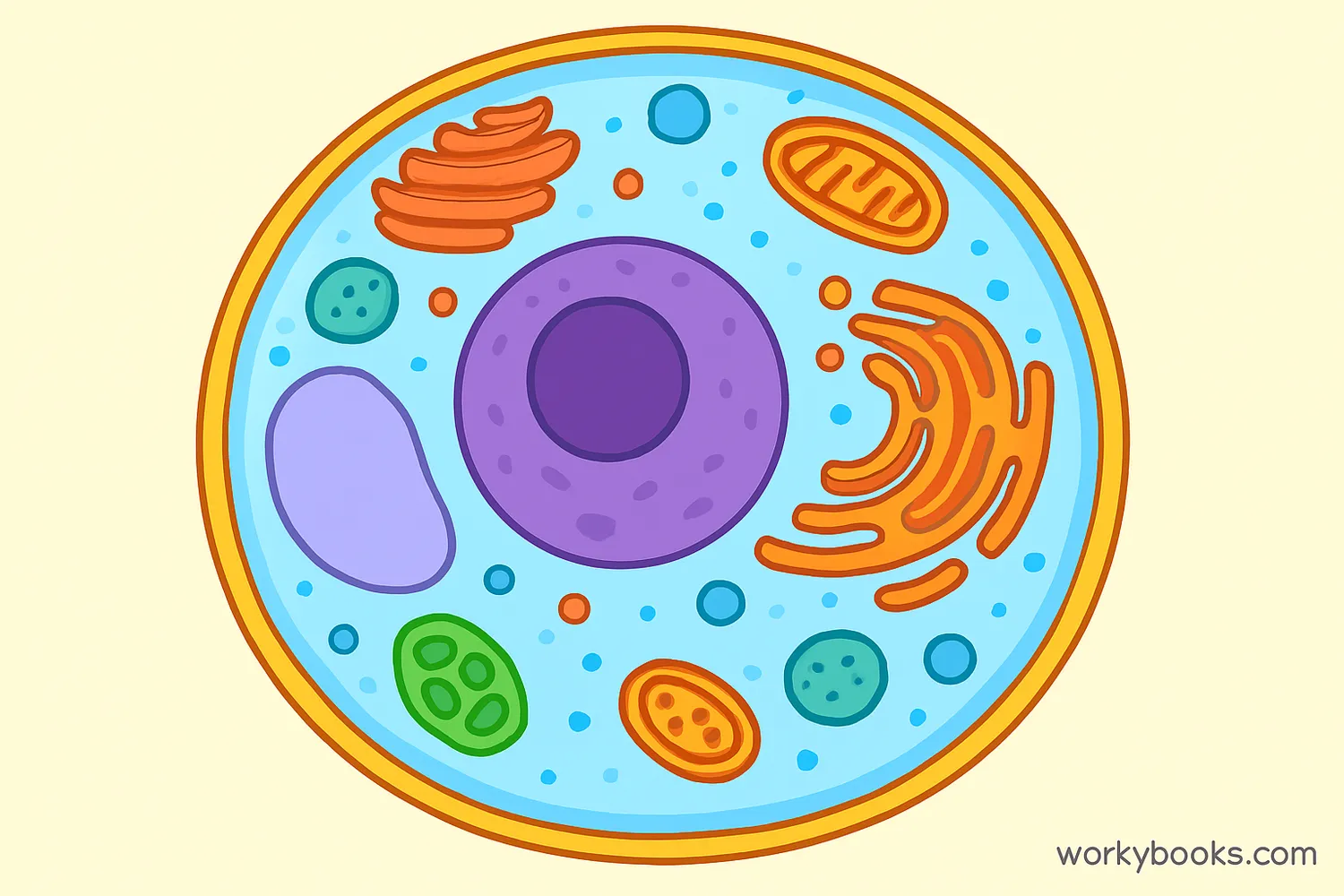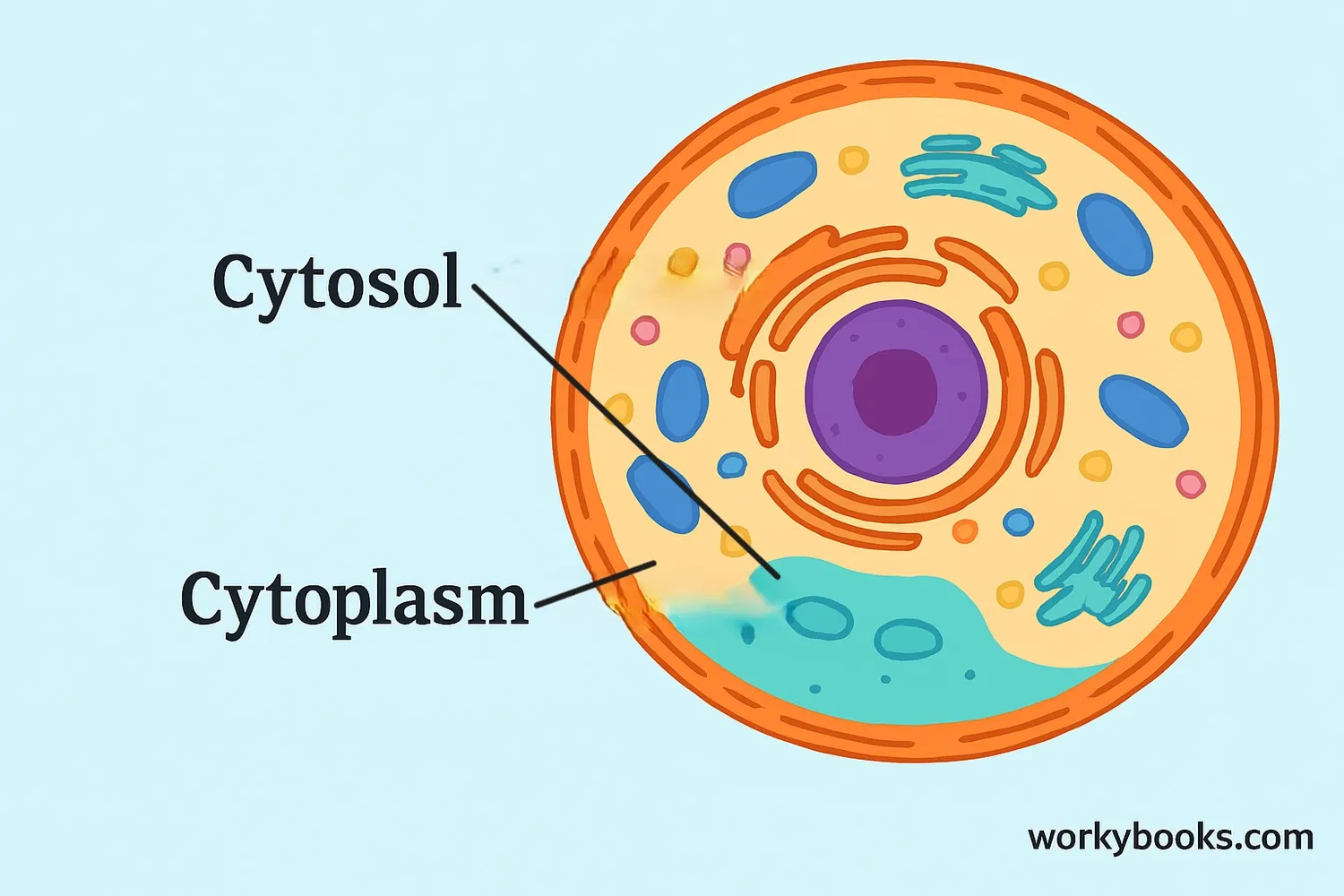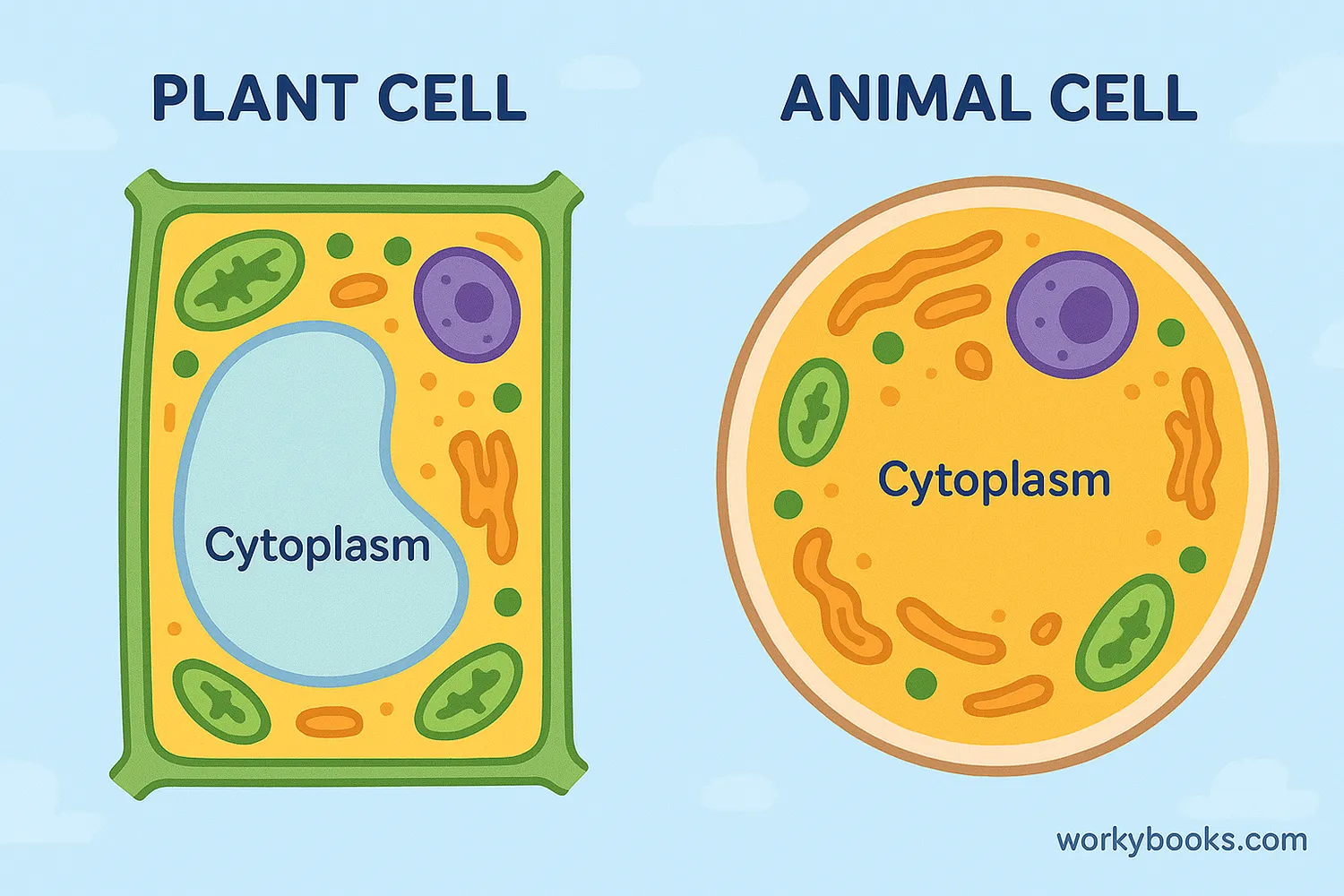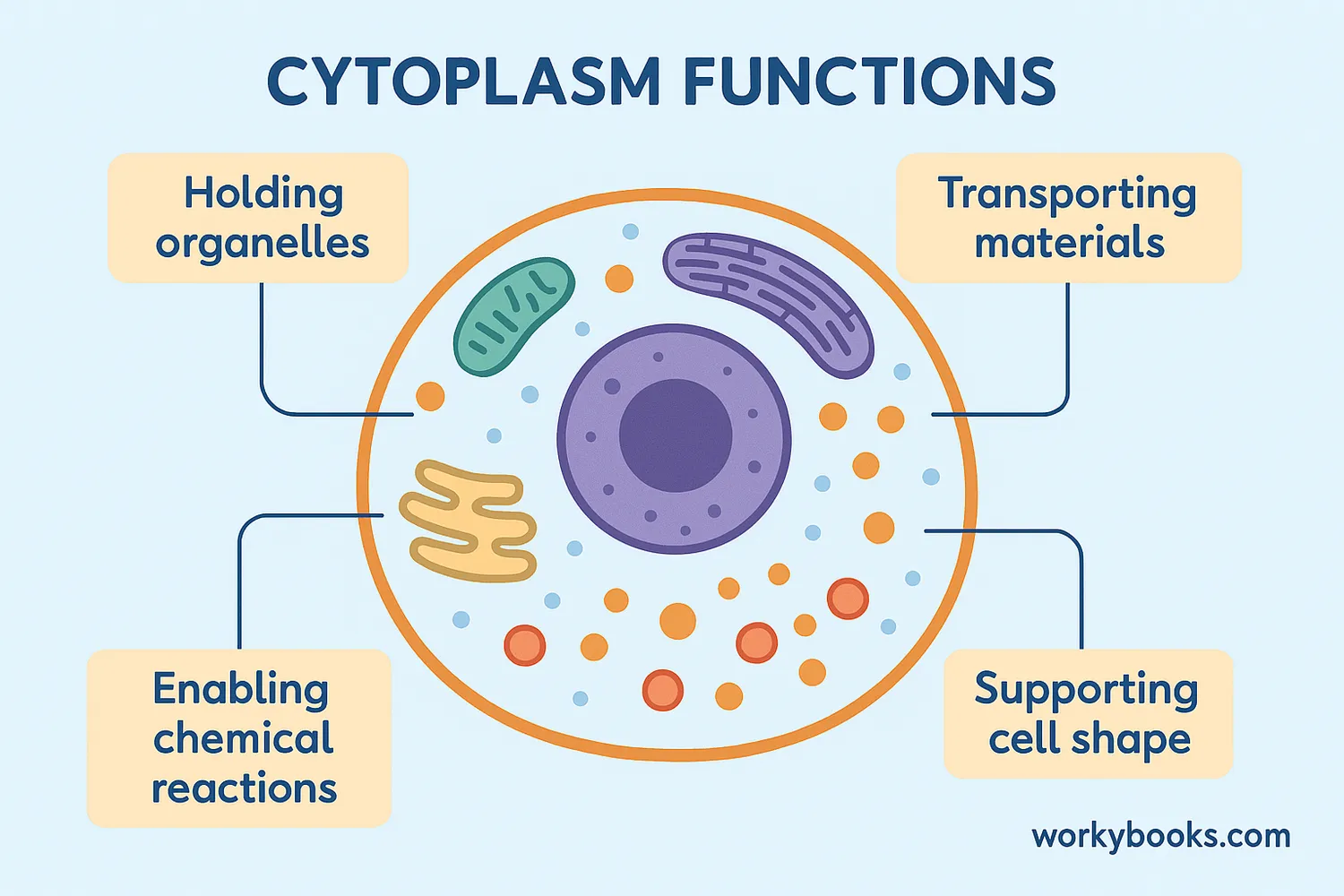Cytoplasm - Definition, Examples, Quiz, FAQ, Trivia
Discover the amazing gel that holds everything together inside cells!
What is Cytoplasm?

Cytoplasm is the jelly-like substance that fills the inside of a cell, surrounding all the tiny cell parts called organelles. Think of it as the "cell jelly" that holds everything together!
Every cell - from the tiny bacteria to the cells in your body - has cytoplasm. It's made mostly of water but contains important salts, proteins, and other materials that cells need to function properly. Without cytoplasm, the organelles would just float around without direction!
Cell Fact!
Cytoplasm makes up about 70% of a cell's volume! It's the largest part of the cell besides the nucleus.
Cytoplasm vs Cytosol

These two terms are often confused but have important differences:
Cytosol is the liquid part of the cytoplasm - the watery solution where molecules move around and chemical reactions happen. It's like the "cell juice."
Cytoplasm includes everything inside the cell membrane except the nucleus. This means it includes both the cytosol AND all the organelles floating in it!
| Feature | Cytosol | Cytoplasm |
|---|---|---|
| Definition | The liquid portion only | Entire contents (liquid + organelles) |
| Composition | Water, ions, proteins, molecules | Cytosol + all organelles |
| Function | Site of chemical reactions | Environment for all cellular activities |
| Visual Analogy | Swimming pool water | Entire pool (water + people + toys) |
Cytoplasm in Plant & Animal Cells

While both plant and animal cells have cytoplasm, there are some important differences:
Plant Cell Cytoplasm
Contains chloroplasts for photosynthesis. Cytoplasm flows through channels connecting plant cells.
Animal Cell Cytoplasm
No chloroplasts. Cytoplasm is more fluid and moves easily within the flexible cell membrane.
Common Features
Both contain organelles suspended in cytosol. Both enable cellular movement and reactions.
Amazing Adaptation!
Plant cytoplasm has to be strong enough to push against the rigid cell wall, while animal cytoplasm is more flexible.
Functions of Cytoplasm

Cytoplasm does many important jobs inside the cell:
Home for Organelles
Provides a place for all organelles to live and function properly
Chemical Reactions
Hosts important cellular processes like protein building
Transportation
Helps move materials around the cell
Shape & Support
Gives the cell structure and helps maintain its shape
Storage
Holds nutrients and essential molecules
Without cytoplasm, cells couldn't perform their daily activities. It's like the stage where all the cell's important work happens!
Cytoplasm Quiz
Test your cytoplasm knowledge with this quiz! Answer all 5 questions to see how much you've learned.
Frequently Asked Questions
Here are answers to common questions about cytoplasm:
Fun Cytoplasm Trivia
Discover some amazing facts about cytoplasm!
Mostly Water
Cytoplasm is about 80% water! The rest is made up of proteins, salts, and other important molecules that keep the cell functioning.
Cytoplasmic Streaming
In plant cells, cytoplasm can flow at speeds up to 100 microns per second - that's like you running 4 miles in an hour at cellular scale!
Sensitive to Temperature
Cytoplasm changes consistency with temperature! It becomes more fluid when warm and more gel-like when cold, just like jelly!
Ancient Discovery
The term "cytoplasm" was first used in 1882 by German scientist Eduard Strasburger, who was studying plant cells.


